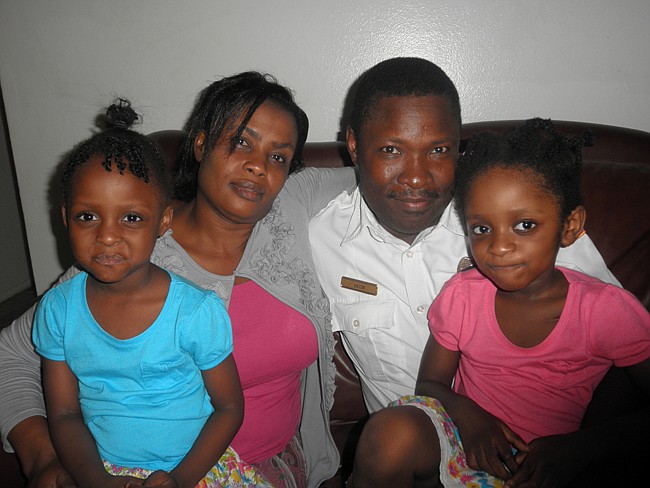- October 21, 2024
-
-
Loading

Loading

There’s one day that the Colo family will never forget, and it began a timeline for them marked not by happy milestones, but by medical treatments trying to save both of their baby daughters. Jan. 22, 2008, was the day 5-month-old Majana Colo got a fever. Days later she was in an ICU in a coma, months later she was on her way to get a transplant.
“To me, when she was at the hospital, I saw a dead kid … there was no movement,” her father, Jacob Colo, said. “It was just the machines that show you she has life — that’s it.”
Majana had FHLH, a rare genetic immune disorder that is rapidly fatal. Its symptoms normally appear, like with Majana, when the immune system launches an exaggerated attack on an infection. Tests revealed the disorder, and the only way she could be saved was by a bone marrow or cord blood transplant. While her father was a partial match, he couldn’t be the one to save her, and doctors searched for another donor. Finally, she got a match through a cord blood donor.
Umbilical cord blood, like bone marrow, contains many blood-forming cells that can be used in transplants to treat patients with leukemia, lymphoma and many other life-threatening diseases. It is collected right after a baby’s birth, and does not affect delivery, mother or child. The medical community supports it, and last year Gov. Rick Scott signed a bill into law that encourages health care providers to inform new mothers on their cord blood options.
It’s especially helpful for patients with more uncommon tissue types because donors don’t need to be as close of a match as marrow or peripheral blood stem cells. In just the past few years, the addition of cord blood to the National Marrow Donor Program banks has increased the number of transplants for minorities from 12.5 percent of transplant recipients to 31 percent, said Dr. Edward Guindi, a former obstetrician and gynecologist and president and CEO of CORD:USE Public Cord Blood Bank in Orlando.
“It’s really had a profound effect on transplantation and access to care no matter what your race or ethnicity,” Guindi said.
This was an important fact for the Colo family, Maitland-area residents who are originally from Haiti. They endured a three-month stay at Florida Hospital, where Majana was cared for until a donor was found and she was well enough to go to a hospital in Boston to receive her transplant. The disease and chemotherapy took its toll on her little body, making it swell until she was unrecognizable.
“Sometimes I can’t even see her,” her mother, Maggy Colo, said.
There was no way to even tell she had eyes. But Jacob remembers when she began to come out of her coma and get better. There were little flickers of movement under her eyelids, which they could finally make out.
“And then one day her eyes opened,” Jacob said.
Happiness zipped through him — he could finally see life in her. The feeling was amazing.
“It’s like electricity,” he said.
But their journey wasn’t over. While Majana was undergoing treatment, Maggy was pregnant with their second child, Jamania, and she was also born with FHLH. Jamania was able to get a bone marrow transplant just a couple of years after her sister. The sisters, now 4 and 3, get checked frequently to make sure they’re still healthy and free from FHLH. Because of their weakened immune systems, the family hasn’t had much time out together because the two girls can easily get sick.
This past Christmas, though, the whole family went out all together for the first time in three years. God and their church was one way the couple managed to get through it all, they said, and it was a fitting place for them to step out and really feel normal for the first time. Maggy said she always kept the faith that her daughters would survive.
Visit corduse.com for more information about CORD:USE and what they offer to families and the public. For more information about the uses of cord blood stem cells, visit doh.state.fl.us/family/mch/umbilical/umbilical.html
“When God [gives] you something, he [gives it to] you for forever,” she said.
Both the girls are now smiley and full of energy. A couple months ago Majana even sang in front of her church, much to everyone’s surprise — she just raced up there, unplanned — and teary joy.
But Majana and Jamania both wouldn’t be alive without donations from strangers. And when it comes to donating cord blood, it’s so simple. While some families choose to keep their child’s cord blood for their own use for a cost, others have the option of donating it for free.
CORD:USE is a partner with Winnie Palmer Hospital for Women and Babies, as they take the donated cord blood, process it and bank it for use by patients in need. Families from the hospital have donated cord blood used in more than 70 transplants since 2006. And the bank is planning to expand to the Florida Hospital system, bringing the option to mothers in four local hospitals, including Winter Park Memorial Hospital.
“We’re taking a resource that’s completely not controversial … and using what would’ve otherwise been discarded as medical waste to save lives,” Guindi said.